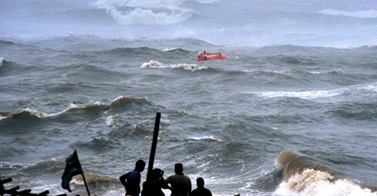Kuala Lumpur/New Delhi, Mar 15: Search operations for the Malaysian jetliner, which mysteriously disappeared last Friday, moved closer to the Chennai coast with India today readying to deploy its assets in the Bay of Bengal following a fresh request from Kuala Lumpur.

Conflicting reports further compounding the mystery of the missing Flight MH370 ferrying 239 people continued to surface today with one report suggesting that the plane turned back after it lost radar contact and flew over Malaysia.
Another report quoting an unnamed US official said investigators were probing whether it was an act of piracy with the possibility of someone diverting the aircraft.
As joint search operations by 13 countries including India intensified, aviation experts reasoned that the Boeing 777-200 could not have flown undetected over such a long distance.
Widening its search in the Indian Ocean, Malaysia today sought radar data from its neighbours and India.
The request from Malaysia came a day after India joined the massive search operations by deploying six aircraft including its latest special surveillance P-8I plane and three helicopters under 'Operation Searchlight'.
India's navy, air force and coast guard are searching for the MH370 flight in the south Andaman Sea following the request.
Malaysian acting Transport Minister Hishammuddin Hussein said his country has sought radar data from India and other neighbouring countries to trace the plane that went missing after taking off late on Friday from Kuala Lumpur for Beijing.
"The aircraft is still missing, and the search area is expanding," he said. "Together with our international partners, we are pushing further east into the South China Sea and further into the Indian Ocean."
As world awaits potential clues to plane's mysterious disappearance, US officials helping in efforts to trace the plane today said they are shifting their search to the Indian Ocean region.
"It's my understanding that based on some new information that's not necessarily conclusive - but new information - an additional search area may be opened in the Indian Ocean," White House spokesman Jay Carney said in Washington.
The missing jetliner carrying 227 passengers, including five Indians and one Indian-origin Canadian, and 12 crew members mysteriously vanished from radar screens an hour after taking off from Kuala Lumpur.
There has been no trace of the plane nor any sign of wreckage despite a search by the navies and military aircraft of 13 countries across Southeast Asia.
"The Malaysian authorities have requested for a search in the Bay of Bengal, expanse of which is around 9,000 sq km. This area is approximately 900 km due West of Port Blair. Search in this area would be undertaken by the resources of Eastern Naval Command," a Defence Ministry statement said in Delhi.
The Joint Operations Room at Port Blair has been activated to monitor the progress of the search operations which entered the seventh day, it said.
The move to expand the search to the Indian Ocean came after the US' defence and aviation experts said that there was a significant probability of the plane to be at the bottom of the Indian Ocean.
"And we are consulting with international partners about the appropriate assets to deploy," Carney said in Washington without specifying the nature of the new information.
A P-8 Poseidon aircraft and a guided missile destroyer, the USS Kidd, were due to aid the international hunt for the jet, Pentagon spokesman Colonel Steven Warren said.
"At Malaysia's request, the USS Kidd is north of the Strait of Malacca in what we're calling the western search area," Warren told reporters.
USS Kidd - a guided-missile destroyer - which was initially deployed to the Gulf of Thailand is now transiting from the Strait of Malacca to the Indian Ocean, the US Navy said.
A US official briefing on search said that the flight sent signals to a satellite for four hours after the aircraft went missing, the Washington Post reported.
The US official, who spoke on condition of anonymity, said the Boeing 777-200 was not transmitting data to the satellite, but was instead sending out a signal to establish contact.
"If the two engines on the Boeing 777 functioned for up to four additional hours, that could strengthen concern that a rogue pilot or hijacker took control of the plane early Saturday over the Gulf of Thailand," the paper said.
Meanwhile, The Wall Street Journal said communication satellites received intermittent data "pings" from the missing jet, giving the plane's location, speed and altitude for at least five hours after it disappeared from radar screens.
The final satellite ping was sent from over water, at what one of these people called a "normal" cruising altitude. Noting that it is unclear why the transmissions stopped, the daily reported that one possibility could be that the system sending them had been disabled by someone on board.








Comments
Add new comment